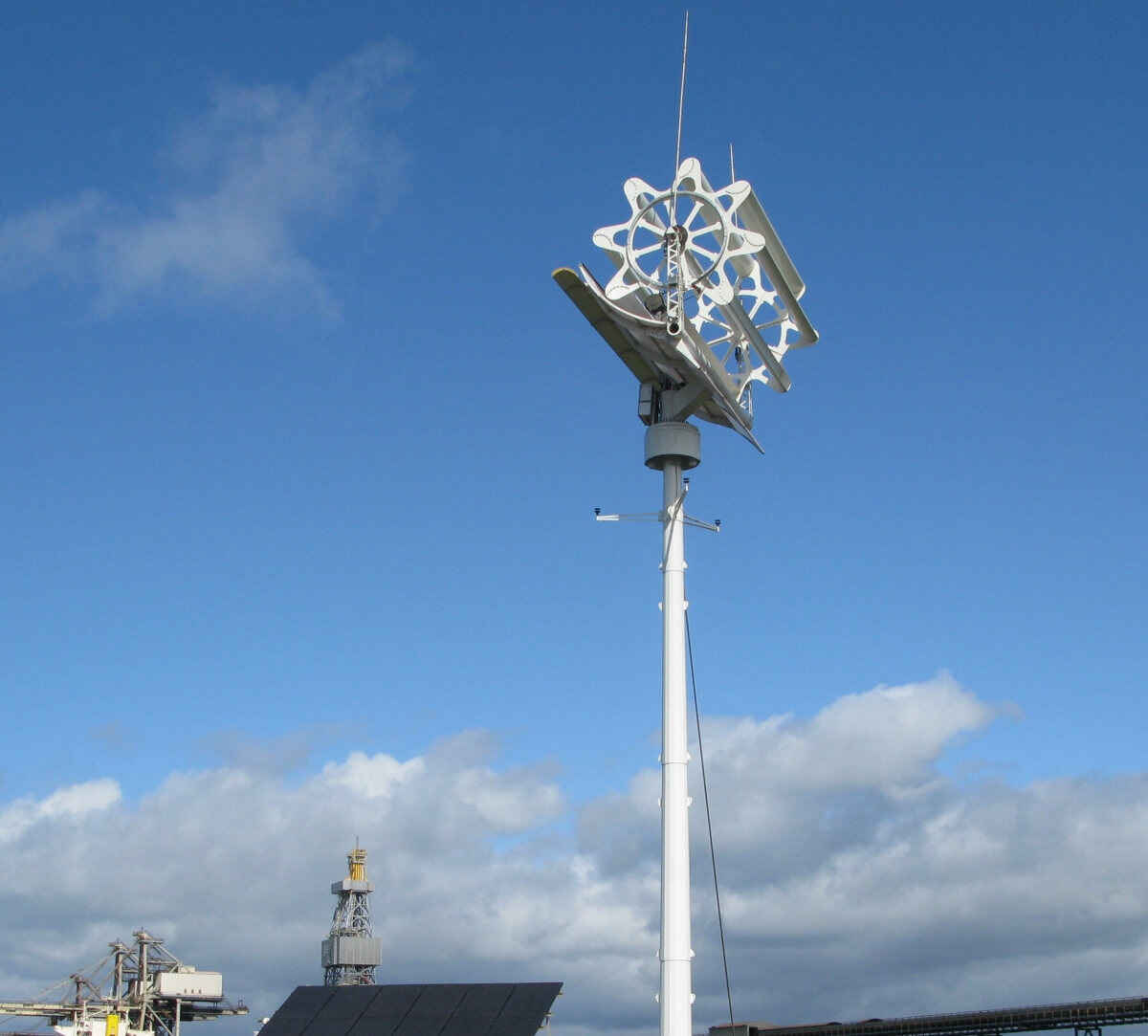Vodafone to Build Wind-Powered Mobile Masts

Vodafone will shortly begin installing self-powered mobile masts equipped with their own turbines, solar panels and batteries—part of the operator’s pledges to reach net-zero in the UK by 2027 and bring coverage to more rural sites.
The new Eco Towers (pictured) won’t need to be connected to the electricity grid or have backup diesel generators, reducing Vodafone’s energy consumption. Instead, they'll run off electricity they generate with a Transverse Axis wind turbine—a patented design with a shield that delivers optimum lift and drag performance across different wind speeds and avoids the typical drawbacks of small wind installations. The mobile masts were designed by energy solution developer Crossflow in collaboration with Swansea University and tested in a MIRA wind tunnel.
As of July of this year, Vodafone has powered its UK and European operations solely with renewable electricity, including some it generates itself through on-site renewable projects at data centres and shops. The new Eco-Towers will allow Vodafone to power its masts through self-generated clean electricity too.
Andrea Dona, Vodafone UK’s Chief Network Officer, said: “Our approach to managing our network as responsibly as possible is very simple: we put sustainability at the heart of every decision. There is no silver bullet to reducing energy consumption, but each of these steps forward takes us closer to achieving net zero for its UK operations by 2027.”
The towers are also “quiet” and “bird-friendly,” Vodafone said. The network is hoping to receive approval to install them in “the most sensitive of sites, including Areas of Outstanding Natural Beauty.”
The Eco-Towers can also be constructed in remote areas distant from the electricity grid, enabling Vodafone to deliver its part of an industry-wide commitment to cover 95% of the UK’s landmass with 4G. The £1 billion Shared Rural Network (SRN) will be completed by the end of 2025.
“We are committed to improving rural connectivity, but this comes with some very significant challenges. Connecting masts to the energy grid can be a major barrier to delivering this objective, so making these sites self-sufficient is a huge step forward for us and for the mobile industry,” Dona said.
However, these masts still need to be connected to fibre optic cables to deliver data services.
Crossflow’s CEO Martin Barnes said: “We are really excited to be working with Vodafone. It’s a fantastic opportunity to show how our self-powered Eco-Tower solves the problem of harnessing ‘small wind’ to offer not just that all important carbon reduction but also significant commercial benefits. In the case of Vodafone, it will help to accelerate the expansion of rural connectivity, transform energy consumption patterns and deliver significant economic and carbon savings."
Field-trial deployments of the Eco-Towers will begin before the end of the year, Vodafone confirmed.
Read on our blog

With the government poised to implement tough new measures to...

Budget broadband provider TalkTalk has been notifying customers via email...

A year-long investigation by charity Citizens Advice has revealed a...

Education Secretary Nadhim Zahawi has announced a new commitment to...
